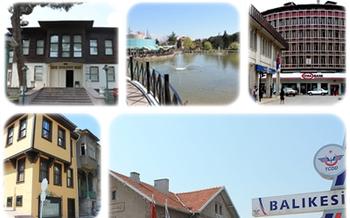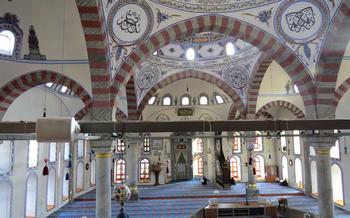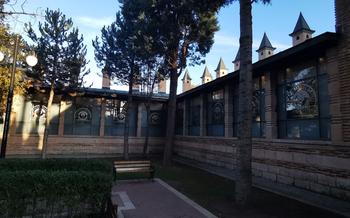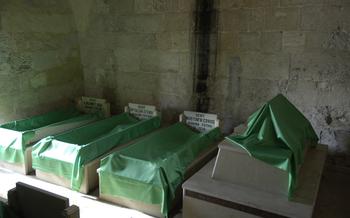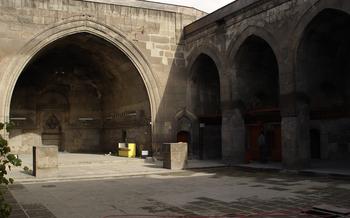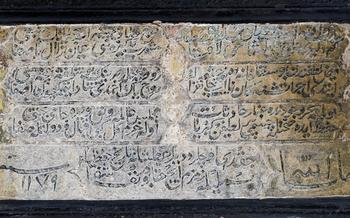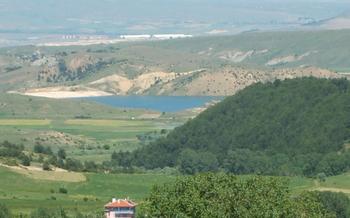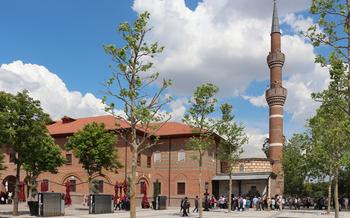
Elbistan Ulu Camii (The Grand Mosque of Elbistan)
- History and Origin:
- Architecture and Design
- Interior Beauty
- Prayer Halls and Worship
- Pilgrimage and Spiritual Significance
- Conservation and Restoration
- Visiting the Mosque
- Photography and Videography
- Accessibility and Facilities
- Local Cuisine and Dining
- Insider Tip: Uncovering the Hidden Gem of Elbistan Ulu Camii
History and Origin:
The Elbistan Ulu Camii, also known as the Grand Mosque of Elbistan, holds significant historical importance in the city of Kahramanmaraş, Turkey. Its origins can be traced back to the Seljuk period, a time of great architectural and cultural advancements in the region. The mosque was constructed during the reign of the Seljuk sultan, Alaeddin Keykubad I, who was known for his patronage of monumental structures and his dedication to preserving Islamic heritage. The Elbistan Ulu Camii stands as a testament to the Seljuk legacy and the profound impact it had on the development of architecture and urban planning in Anatolia.
The mosque's architectural style reflects a blend of Seljuk and Anatolian influences, showcasing the fusion of diverse design elements that characterized the era. Its unique features, such as the intricate stone carvings, the graceful dome, and the towering minarets, exemplify the Seljuk mastery of architectural techniques and their commitment to aesthetic excellence. Over the centuries, the mosque has undergone several renovations and additions, reflecting the changing needs of the community and the evolving architectural trends, while preserving its original character and historical significance.
Architecture and Design
The Elbistan Ulu Camii stands as a testament to the architectural prowess of the Seljuk era. Constructed primarily of stone, the mosque showcases traditional construction techniques that have withstood the test of time. Its distinctive features include a majestic dome, towering minarets, and a serene courtyard that invites contemplation and tranquility.
The dome, a symbol of Islamic architecture, dominates the skyline of Elbistan. Its intricate design and elegant proportions create a breathtaking visual spectacle, capturing the essence of Seljuk craftsmanship. The minarets, slender and graceful, rise towards the heavens, echoing the call to prayer across the city.
The courtyard, a tranquil oasis amidst the bustling city, provides a serene setting for reflection and prayer. Surrounded by elegant arcades and adorned with intricate carvings, the courtyard invites visitors to pause and appreciate the beauty of the mosque's architecture.
Throughout the mosque, Islamic and Seljuk design elements harmoniously blend, creating a unique and awe-inspiring masterpiece. From the intricate geometric patterns adorning the walls to the delicate calligraphy that graces the mihrab, every detail of the mosque reflects the rich cultural heritage of the Seljuk era.
Interior Beauty
The interior of the Elbistan Ulu Camii is a testament to the exquisite craftsmanship and artistic vision of its builders. The walls and arches are adorned with intricate calligraphy, featuring verses from the Quran and Islamic motifs. The mihrab, the prayer niche that indicates the direction of Mecca, is a masterpiece of Islamic art, adorned with colorful tiles, intricate carvings, and delicate stuccowork. The minbar, the pulpit from which the imam delivers sermons, is equally impressive, showcasing fine woodwork and intricate geometric patterns. The harmony between the architectural elements and the interior design creates a sense of awe and reverence, enhancing the spiritual experience of worshippers. The use of natural light through strategically placed windows illuminates the interior, casting a warm glow on the ornate decorations and enhancing the overall ambiance of the mosque.
Prayer Halls and Worship
The Elbistan Ulu Camii boasts spacious prayer halls that can accommodate a large number of worshippers during congregational prayers. These halls are segregated into separate sections for men and women, ensuring privacy and comfort for all. The mihrab, or prayer niche, stands as the focal point of the prayer halls, indicating the direction of qibla (the direction of prayer towards Mecca). It is intricately decorated with carvings, tiles, and calligraphy, drawing the eyes of the worshippers during prayers. The minbar, or pulpit, is another significant feature of the mosque, where the imam delivers sermons and religious teachings. Its design often incorporates intricate woodwork and carvings, adding to the overall beauty and grandeur of the mosque's interior.
Pilgrimage and Spiritual Significance
The Elbistan Ulu Camii holds immense spiritual significance for Muslims, drawing pilgrims from near and far. Believers visit the mosque to connect with their faith, seek blessings, and pay homage to the history of Islam. The mosque's association with the Prophet Muhammad and the early Islamic era adds to its religious importance. Many pilgrims embark on spiritual journeys to the mosque, seeking guidance, solace, and a deeper connection to their faith. The tranquil atmosphere, intricate artwork, and stories whispered within the mosque's walls create a profound and moving experience for those who visit. Whether seeking spiritual reflection or a connection to the past, the Elbistan Ulu Camii offers a sacred space for pilgrims to find peace, inspiration, and a renewed sense of purpose.
Conservation and Restoration
The passage of time and the elements have taken their toll on the Elbistan Ulu Camii, necessitating ongoing efforts to preserve and restore its original structure. Local authorities and heritage organizations have collaborated to protect and enhance the mosque, employing traditional techniques to maintain its historical integrity. Challenges arise in balancing the need for conservation with the desire to accommodate the needs of contemporary visitors. Restoration projects focus on preserving the mosque's architectural features, repairing any damage, and implementing measures to ensure its longevity. Through these efforts, the Elbistan Ulu Camii continues to stand as a testament to the enduring legacy of Islamic architecture and the dedication of those committed to preserving its heritage.
Visiting the Mosque
If you plan to visit the Elbistan Ulu Camii, it is crucial to be mindful of the mosque's etiquette and dress code. Visitors should dress modestly, covering their shoulders and knees. Women may also choose to cover their hair as a sign of respect. During prayer times, which typically occur five times a day, visitors are requested to remain quiet and avoid disturbing the worshippers. Guided tours are available for those interested in learning more about the mosque's history and architecture. Informational brochures are also provided on-site, offering insights into the mosque's significance and features. To capture the mosque's beauty, visitors are welcome to take photos and videos, but they should be respectful and avoid using flash photography during prayers. The mosque's stunning architecture and spiritual ambiance make it a must-visit destination for anyone interested in Islamic history, culture, and architecture.
Photography and Videography
When visiting the Elbistan Ulu Camii, capturing its beauty and grandeur through photography and videography is a natural inclination for many visitors. It is important to adhere to certain guidelines and etiquette to ensure a respectful and immersive experience for all.
-
Respectful Conduct: Observe silence and avoid disruptive behavior during prayer times, allowing worshippers to focus on their devotions.
-
Architectural Details: Focus on capturing the intricate architectural details of the mosque, including the dome, minarets, and courtyard. Highlight the harmonious blend of Islamic and Seljuk design elements.
-
Ambiance and Atmosphere: Convey the spiritual ambiance of the mosque through your shots, capturing the interplay of light and shadow, the serene atmosphere, and the devotion of worshippers.
-
Social Media Sharing: Share your experiences and photographs on social media platforms, using appropriate hashtags and captions to raise awareness about the mosque's historical and cultural significance.
Accessibility and Facilities
Elbistan Ulu Camii welcomes visitors from all walks of life and strives to provide an inclusive and accessible environment.
For visitors with disabilities, the mosque features ramps and elevators to ensure easy access to all areas. Spacious prayer halls accommodate wheelchairs, and accessible restrooms are available on-site.
Prayer facilities, including designated areas for ablution, are well-maintained and accessible to all. The mosque's staff and volunteers are always ready to assist visitors with any special needs or inquiries.
In terms of transportation, the mosque is conveniently located near public transportation routes, making it easy for visitors to reach. Ample parking is available in the vicinity, ensuring a hassle-free visit.
Whether you're a devout Muslim seeking a spiritual connection or a curious traveler eager to explore Islamic architecture, Elbistan Ulu Camii is a welcoming and accessible destination that caters to the needs of all visitors.
Local Cuisine and Dining
When visiting the Elbistan Ulu Camii, don't miss the opportunity to explore the local cuisine of Kahramanmaraş. The city is renowned for its rich culinary traditions, offering a delectable array of dishes that reflect the region's history and culture.
For an authentic dining experience, head to one of the many local restaurants or eateries near the mosque. Sample traditional dishes such as "maraş döneri," a thinly sliced and grilled meat dish served with flatbread and vegetables; "beyran," a hearty lamb soup flavored with garlic and red pepper; or "külbastı," a skewered and grilled meat dish often served with tomato sauce.
Vegetarians can enjoy "şiveydiz," a local dish made with bulgur, eggplant, and tomatoes, or "haşhaşlı çorba," a poppy seed soup. For sweets, try "Maraş dondurması," a unique and stretchy ice cream, or "cevizli sucuk," a sweet sausage made with walnuts and grape molasses.
When dining in Kahramanmaraş, be sure to embrace the local customs and traditions. Show respect by greeting the restaurant staff and other diners, and don't be afraid to ask for recommendations or guidance on what to order. Enjoy the vibrant atmosphere and the opportunity to interact with the friendly locals.
For a truly immersive experience, consider joining a local cooking class or food tour. Learn the secrets of traditional recipes and discover the stories behind the dishes that have shaped the culinary heritage of Kahramanmaraş.
Insider Tip: Uncovering the Hidden Gem of Elbistan Ulu Camii
Beyond its historical significance, the Elbistan Ulu Camii holds a captivating secret—a hidden underground chamber beneath the mosque. This concealed space, known as the "gizli mescit" (hidden prayer chamber), is a testament to the mosque's rich history and architectural ingenuity. While not always accessible to visitors, inquiring at the mosque may reveal opportunities to explore this hidden gem, offering a glimpse into the mosque's hidden depths and inviting visitors to uncover the secrets that lie beneath the surface.
